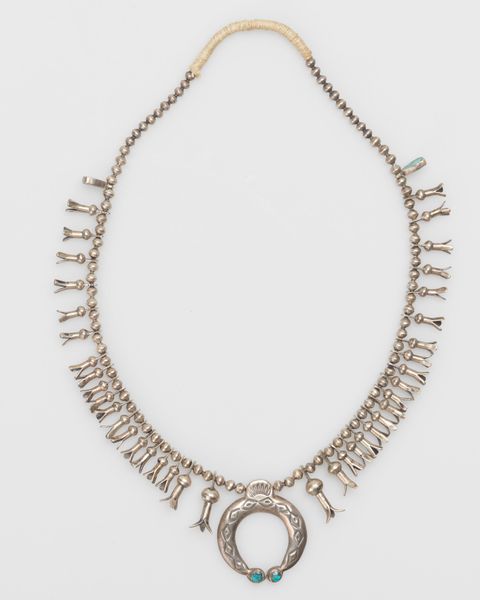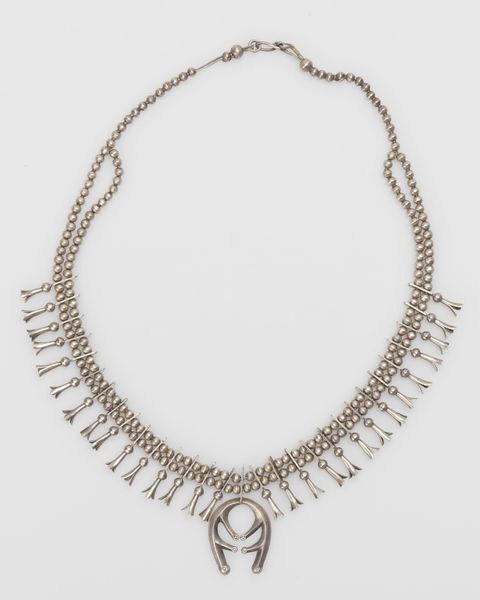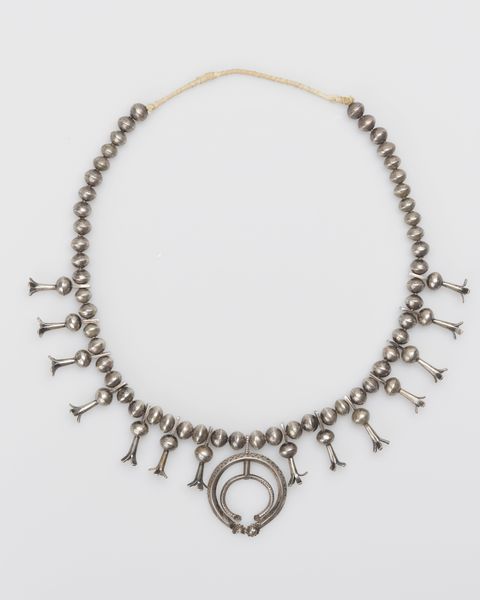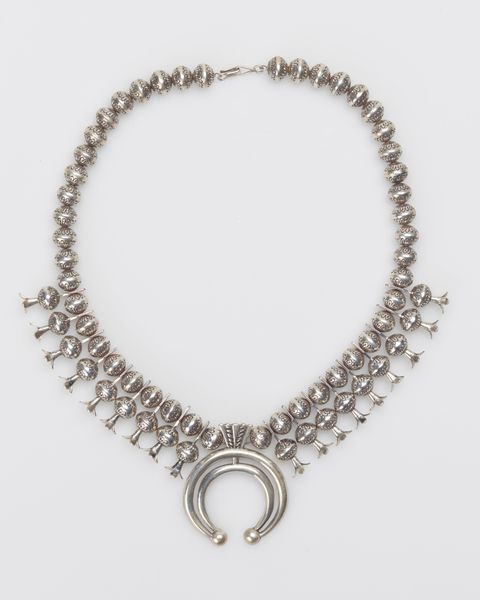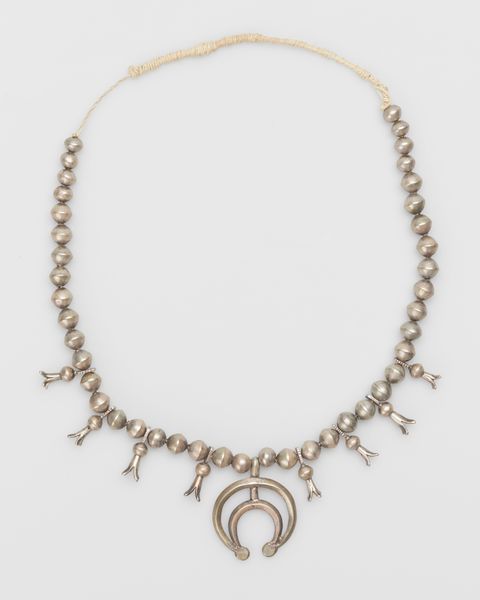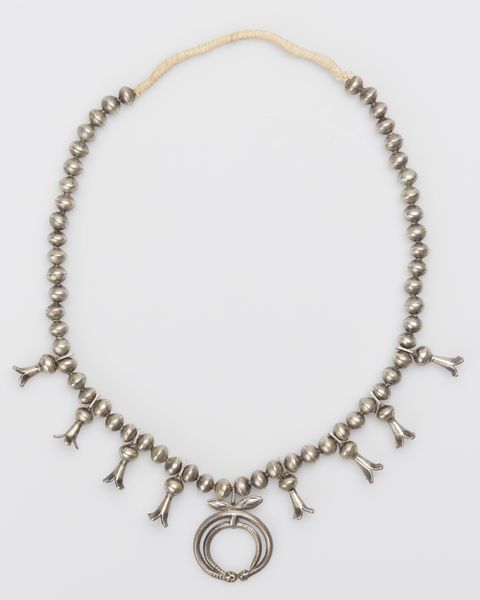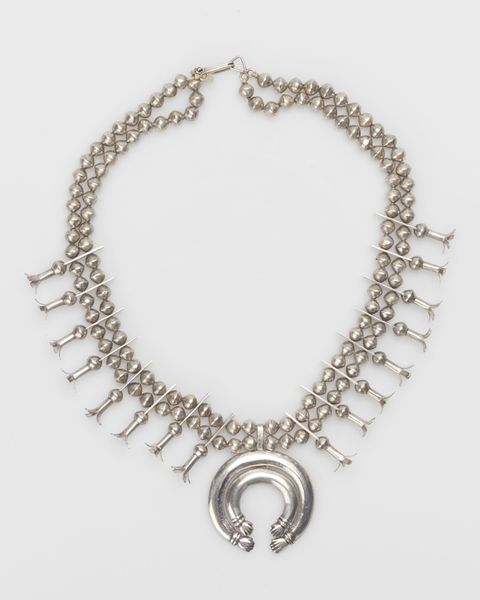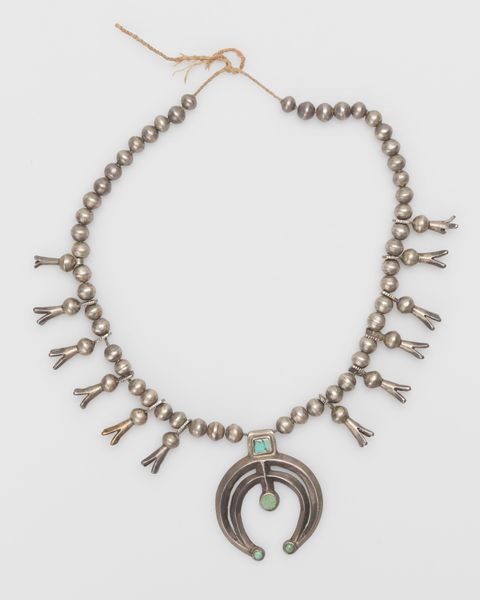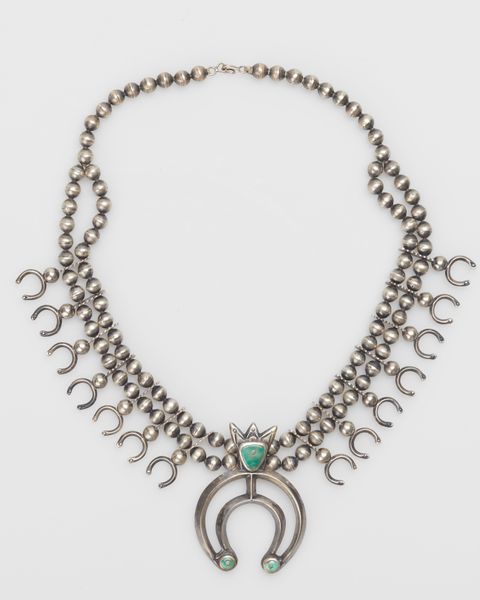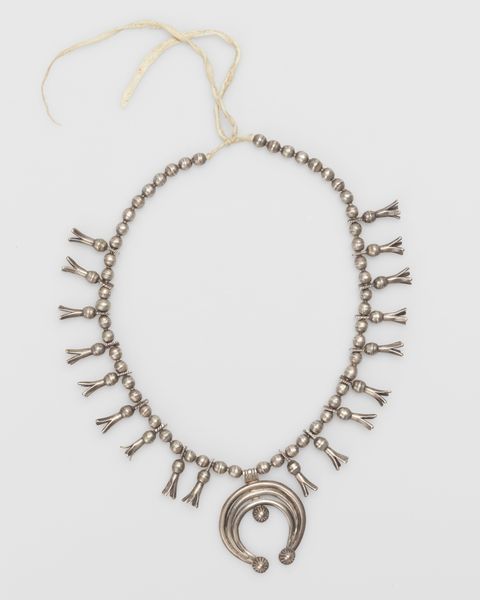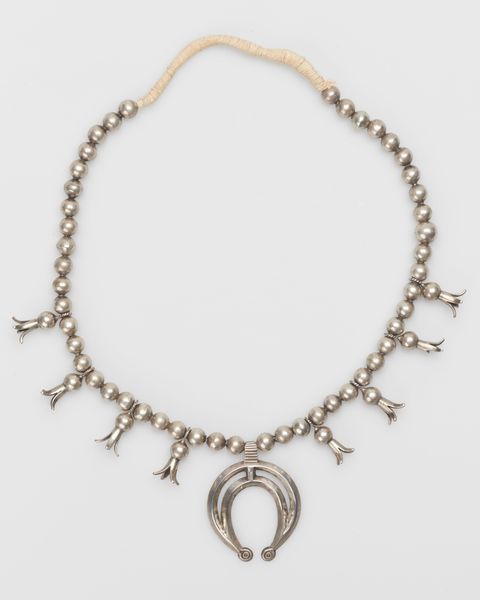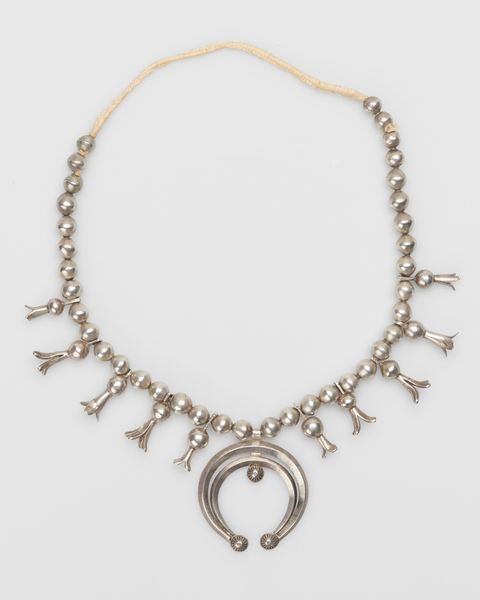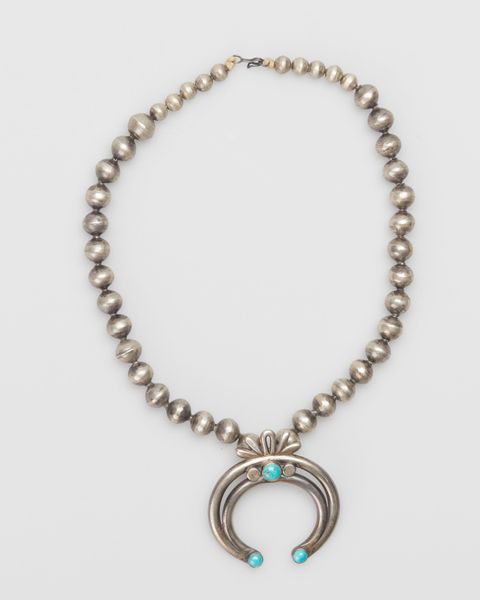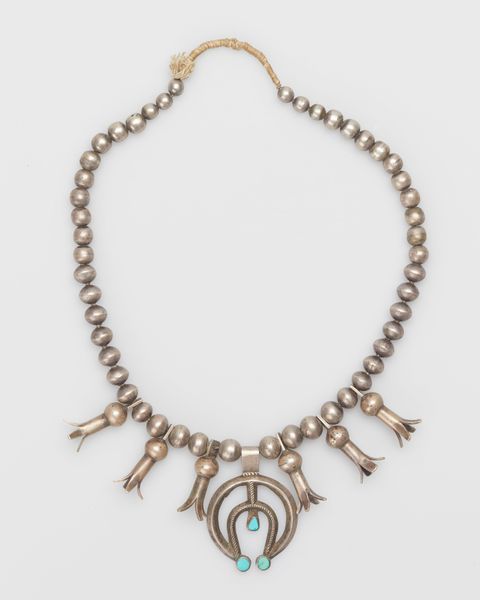
silver, metal
#
silver
#
metal
#
indigenous-americas
Copyright: Public Domain
This necklace was made by a Navajo, or Diné, artist using silver. The Diné have a long history of silverworking, beginning in the mid-19th century. The craft was both an economic endeavor and an expression of cultural identity. The central pendant on this necklace is called a "naja," a symbol that predates European contact and may have functioned as a protective amulet. The smaller elements projecting from the necklace are representations of squash blossoms. Together, these symbols reflect Diné values of protection, prosperity, and connection to the natural world. This piece likely dates to the 20th century, a period in which the Diné were navigating complex relationships with the United States government and the broader American economy. Many Diné families relied on income from the sale of artwork and jewelry to tourists and collectors. Diné artists frequently incorporated symbols and designs that would appeal to a non-Native audience. To understand this artwork fully, one would want to research Diné history, culture, and artistic traditions. This necklace represents both cultural continuity and adaptation in the face of colonialism.
Comments
No comments
Be the first to comment and join the conversation on the ultimate creative platform.
